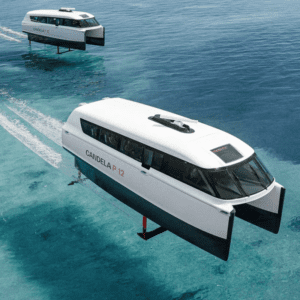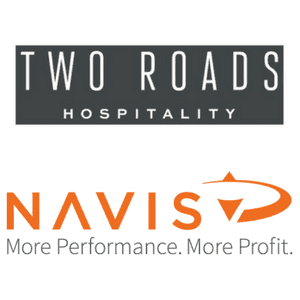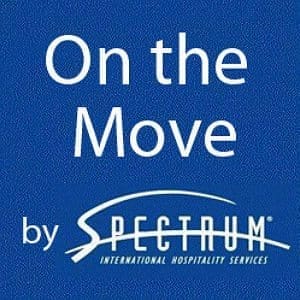Alan Kay, the renowned computer scientist, put it memorably some forty years ago: "the best way to predict the future is to invent it." Aside from masterful technologists like Mr. Kay, few among us have the capacity to actually create the future. But I have no doubt that the foremost responsibility of any leader is to discover where the world is heading and prepare the organization for tomorrow's arrival.
We all look to innovation as a prime source of differentiation and growth. Discovery stands at the core of every innovation effort. Whether it's a breakthrough technology, an emerging business opportunity, or a better way to work, every successful innovation starts with a novel insight that profoundly changes the way we do what we do and ultimately yields substantial value for its creators.
Think of the entrepreneur's most valuable asset. It certainly isn't money. After all, capital is a renewable resource. What's far more valuable is the entrepreneur's ability to discover an untapped market, unsullied by cutthroat competition, where outsize profits await. Successful entrepreneurs aren't capitalists. They're opportunists. They see the white spaces in the market that others don't and exploit those opportunities.
The problem is, as a startup grows into a mature company, too many entrepreneurs put far less emphasis on discovering effective solutions to customers' problems. Instead, they begin to focus almost entirely on delivering. That is, they do what most large organizations do. They strive to more efficiently deliver their product, service, or customer experience. Add to that the fact that most companies are structurally built to maintain the processes and systems that succeeded in the past and avoid any perceived risk to that status quo, and you have a recipe for stasis. Unfortunately, when the world changes, they too often stick with their original business model and stay focused on being efficient instead of more effective. They keep repeating what has already worked. Until it doesn't.
Nowhere is this more evident than in the highly competitive food business. Again and again, we've seen restaurants innovate a novel concept, take off like a rocket, hit their peak, and then begin a long descent into irrelevance. Over the past two decades, my industry has endured a nearly fifty percent mortality rate amongst its biggest brands. The restaurant business is littered with the smoking remains of national chains that once burned brightly but then plummeted back to Earth. The underlying reason? They failed to discover the next growth opportunity.
Most companies' systems and functions are designed to efficiently deliver a business model that was successful yesterday. But what you accomplished yesterday won't help you succeed tomorrow. For that, you must continually turn to discovery.
Fourteen years ago, my Panera colleagues and I helped discover and pioneer an entirely new way of thinking about the restaurant business. That paradigm, which came to be called "fast casual," became the most powerful area of growth in the restaurant industry and a nearly $40 billion market. We did this by opening our eyes to consumer trends that would define our industry's future.
We saw the emergence of the Kinko's generation, those tens of millions of Americans who spend significant hours each month working outside of the traditional office. They hungered for that now familiar "third place," neither home nor office, where they could eat healthy food, feel respected, and get some work done. And as I've previously written, we saw how a large niche of consumers were breaking away from commoditized and processed food and were gravitating to specialty and artisan products.
Based on those and other observations, we created a rendering of what consumers would want in the future. We then tested, prototyped, and retested that rendering, until we achieved a compelling vision of a new kind of restaurant, which aimed to change the currency of the fast-food experience from cheap and plentiful to handcrafted and special, where guests felt good about themselves when they left the café. There were many setbacks along the way, but those discoveries ultimately gave birth to Panera. (If you'd like to get a crisp overview of how Panera came to be, check out this interview I did with NECN's program, "The Boss.")
Wall Street judges Panera and every other public company by what we've achieved over the previous thirteen weeks and what it appears we'll achieve over the next thirteen. Such shortsightedness is one reason why I pay very little attention to quarterly earnings. Today's performance is the byproduct of discoveries and decisions that we made many months and often even years ago. Our time horizon must always extend far beyond the next quarter. As always, that means doing the hard work of imaging what the world will look like in five years and aligning ourselves with those long-term consumer trends.
Equally important, we must avoid the trap that befalls many big companies. That is, they bulk up their delivery muscle while letting their discovery muscle wither. Instead of innovating and doing the things that will help them discover the next growth opportunity, they devote an inordinate amount of resources and focus to getting the work done, on time and on budget.
Of course, delivery matters. A company that busts its budgets and misses its sales targets won't endure for very long. But in terms of the competitive advantage it can generate, discovery matters more. Much more. When it reverses its priorities and puts discovery at the forefront, a company stands a far better chance of getting to the future first.
Source: LinkedIn












